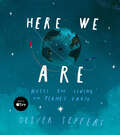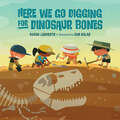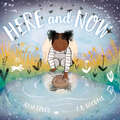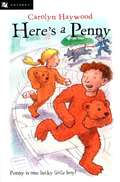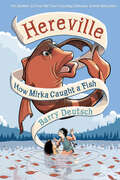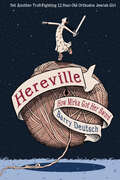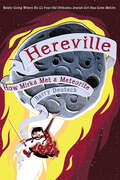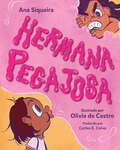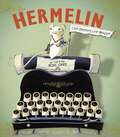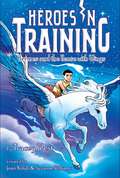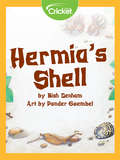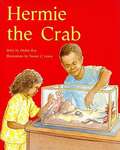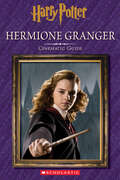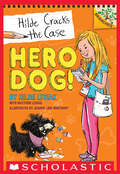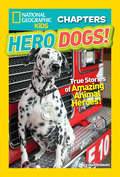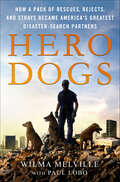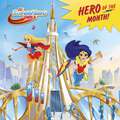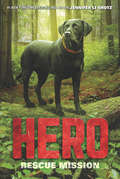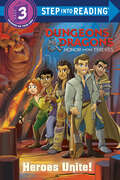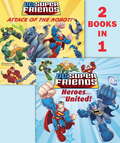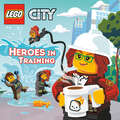- Table View
- List View
Here We Are: Notes for Living on Planet Earth
by Oliver Jeffers#1 New York Times bestsellerA TIME Magazine Best Book of the YearA NPR Best Book of 2017A Boston Globe Best Book of 2017"Moments of human intimacy jostle with scenes that inspire cosmic awe, and the broad diversity of Jeffers's candy-colored humans...underscores the twin messages that 'You're never alone on Earth' and that we're all in this together."--Publisher's Weekly (starred review)"A true work of art."--BuzzFeedOliver Jeffers, arguably the most influential creator of picture books today, offers a rare personal look inside his own hopes and wishes for his child--and in doing so gifts children and parents everywhere with a gently sweet and humorous missive about our world and those who call it home. Insightfully sweet, with a gentle humor and poignancy, here is Oliver Jeffers' user's guide to life on Earth. He created it specially for his son, yet with a universality that embraces all children and their parents. Be it a complex view of our planet's terrain (bumpy, sharp, wet), a deep look at our place in space (it&’s big), or a guide to all of humanity (don&’t be fooled, we are all people), Oliver's signature wit and humor combine with a value system of kindness and tolerance to create a must-have book for parents.Praise for Here We Are:-"A sweet and tender distillation of what every Earthling needs to know and might well spend a lifetime striving to achieve. A must-purchase for new parent shelves"--School Library Journal-"From the skies to the animal kingdom to the people of the world and lots of other beautifully rendered examples of life on Earth, Here We Are carries a simple message: Be kind." --NPR-"[An] enchanting gem of a children's book"--NBC's Today Show-"A must-have book for parents."--Gambit-"A celebration of people all shapes and sizes, and of the beauty and mystery of our Earth."--Booklist-"...a beautifully illustrated guide to living on Earth and being a good person."--Brightly-[Here We Are] is a tour through the land, the sea, the sky, our bodies; dioramas of our wild diversity....[Jeffers] is the master of capturing the joy in our differences."--New York Times Book Review
Here We Go Digging for Dinosaur Bones
by Susan Lendroth"This is a perfect book for a dinosaur storytime." —School Library JournalThis STEM-friendly musical fossil dig will have dinosaur lovers singing along as they learn the science behind paleontology.Set to the tune of "Here We Go 'Round the Mulberry Bush," Here We Go Digging for Dinosaur Bones invites budding paleontologists and dinosaur fans on an exciting fossil dig. Readers will hike the trail, scan the ground, and make a find—then discover how to build a T. Rex from its bones.
Here and Now
by Julia DenosA stunning celebration of mindfulness, meditation, and enjoying each moment, from the team behind the award-winning Windows. This lush picture book is a fantastic tool for engaging children 3-7 who are schooling from home who are eager to feel connected to their world while managing new anxieties.
Here's a Penny
by Carolyn HaywoodFrom Carolyn Haywood, author of the beloved Betsy series, here are four more classics for young readers. These adorable stories of childhood adventures are as fresh today as when they were written more than a half century ago. And now, thanks to dynamic new covers, they're ready to charm a whole new generation of readers.Penny's name is really William, but when he was adopted as a baby, he had hair the color of a new copper penny. Adopted or not, Penny decides to prove his friend Patsy wrong when she says he doesn't truly have a family!
Hereville: How Mirka Caught a Fish
by Barry DeutschThe Orthodox Jewish heroine of Hereville must save her sister from a malevolent magic fish in this “consistently clever” preteen graphic novel series (Kirkus).Welcome back to Hereville, where Mirka, the world’s first time-traveling, monster-fighting Orthodox Jewish girl, faces her greatest challenge yet: babysitting! Mirka just wants to find new adventures, but instead she’s stuck babysitting her disapproving little sister, Layele. When Mirka pushes her sister into a stream, they both get in too deep with an angry magic fish. No matter how hard Mirka fights this fish-out-of-water, it gets stronger and stronger—and it’s out for revenge. Mirka is in over her head, and this time, her whole family is on the line! When the fish kidnaps Layele, Mirka must find a way to save her little sister, and the clues she needs are hidden in her stepmother Fruma’s past. Mixing fantasy, adventure, cultural traditions, squabbling siblings, and preteen commotion, Hereville: How Mirka Caught a Fish is sure to captivate readers with its exciting visuals and indomitable heroine.
Hereville: How Mirka Got Her Sword (Hereville)
by Barry DeutschA young Orthodox Jewish girl embarks on a fantastical adventure in this acclaimed graphic novel for preteens—“a terrific story, told with skill” (Publishers Weekly, starred review).Spunky, strong-willed eleven-year-old Mirka Herschberg isn’t interested in knitting lessons from her stepmother, or how-to-find-a-husband advice from her sister, or you-better-not warnings from her brother. There’s only one thing she does want: to fight dragons!Granted, no dragons have been breathing fire around Hereville, the Orthodox Jewish community where Mirka lives. But that doesn’t stop the plucky girl from honing her skills by fearlessly stands up to local bullies. She battles a very large, very menacing pig. But when she boldly accepts a challenge from a mysterious witch, Mirka might finally get her very own dragon-slaying sword! All she has to do is find—and outwit—the giant troll who’s got it!A delightful mix of fantasy, adventure, cultural traditions, and preteen commotion, Hereville will captivate middle-school readers with its exciting visuals and entertaining new heroine.
Hereville: How Mirka Met a Meteorite (Hereville)
by Barry DeutschIn this “truly clever” graphic novel series, the Orthodox Jewish heroine of Hereville meets her match—a magical doppelgänger of herself (Kirkus, starred review).Mirka is back, and she’s still the only sword-brandishing, monster-fighting Orthodox Jewish girl in town. Or so she thinks. When a misguided troll aims a meteor at Hereville, the local witch grabs the closest thing available to transform the flying, flaming rock—and that would be Mirka’s hair. The meteor is changed, all right: it’s now Mirka’s identical twin. Doppelganger Mirka, vowing to be a better version of the real girl, sets out to charm all of Hereville, including Mirka’s own family. Our heroine challenges the meteor girl to a three-part contest . . . and the loser will be banished from Hereville forever!A delightful mix of fantasy, adventure, cultural traditions, and preteen commotion, this fun, quirky graphic novel series will captivate middle-school readers with its exciting visuals and entertaining new heroine.
Hermana pegajosa (Spanish Edition)
by ANA SIQUEIRA¡Tener a una hermana que quiere hacer todo juntas es una molestia! Pero al final, las hermanas mayores y las hermanas menores siempre encuentran una manera de reconciliarse. Un libro ilustrado divertido para leer en voz alta que está lleno de humor y corazón; perfecto para niños de 3 a 7 años con un hermano o una hermana menor o mayor.Having a sister who wants to do everything together is a pain! But in the end, big and little sisters always find a way to make up.A fun read-aloud picture book that&’s full of humor and heart and perfect for 3-7-year-olds with a younger or older sibling.Claudia es la hermana mayor. Mónica es la hermana menor. Tenerse la una a la otra es divertido. Hacen burbujas de chicle donde cada una sopla una burbuja y casi las juntan en forma de signo de paz.Pero, a veces, Mónica es demasiado pegajosa—queriendo hacer todo lo que Claudia hace. Y Claudia finalmente pierde la paciencia cuando Mónica trata de ir a su torneo de fútbol. Ella le dice a su hermana menor que hay un monstruo que se come a los niños pequeños. Luego, como hacen los hermanos, resuelven sus problemas y se reconcilian.Pero cuando las burbujas de chicle salen mal, ¡le dan un significado nuevo a la palabra &“pegajosa&”!También disponible en inglés como Sticky Hermana.Claudia is the big sister. Monica is the little sister. Having each other is fun. They do bubblegum peace bubbles, where they each blow a bubble and almost touch them together.But sometimes Monica is just way too sticky—wanting to do everything Claudia does. And Claudia finally loses it when Monica tries to come to her soccer tournament. She tells her little sister that there&’s a monster that eats little kids. Then, just like siblings do, they work it out and make up.But when those bubblegum peace bubbles go awry, it brings an entirely new definition to the word sticky!Also available in English as Sticky Hermana.
Hermano Conejo escucha ruidos
by Bill Greenhead Alison Adams Cesar G. Romero Paul LevenoNIMAC-sourced textbook
Hermelin the Detective Mouse
by Mini GreyRatatouille meets Sherlock Holmes in this heartwarming story of mystery and adventure, acceptance and friendship, by the acclaimed creator of Traction Man and Toys in Space. Hermelin is a special little mouse. He was born in a box of cheese and lives in an attic at 33 Offley Street. He can read books and type notes on his typewriter. Most importantly, Hermelin can solve mysteries. And the people of Offley Street are in need of a detective! Again and again, Hermelin is on the case—the anonymous hero. But when his neighbors invite him to a thank-you party in his honor and find out who Hermelin really is—a MOUSE!—will he still be welcome on Offley Street?
Hermes and the Horse with Wings (Heroes in Training #13)
by Joan Holub Suzanne Williams Tracey West Craig PhillipsZeus and the Olympians are tasked with finding a magical horse in this Heroes in Training adventure.When Zeus meets a young boy named Hermes, he claims to have their next quest from Pythia, the Oracle at Delphi. But he wants something for the information: Zeus must hand over the winged sandals he took from Perseus after their last battle. What he doesn’t know is that Perseus had stolen those sandals from someone…Hermes! Could those sandals be another magical object? When Hermes starts to fly, Zeus knows they have found another Olympian for their group—and Hermes lets Zeus know their next adventure will be to “find the force that sings.” Since Pythia never tells them exactly the right words (her glasses tend to get a little foggy), they figure out that they are supposed to find “the horse with wings.” With the help of a reluctant Hermes and another new boy named Ron, the Olympians are off in search of a winged horse—with a few surprises along the way!
Hermia's Shell
by Bish DenhamHermia the hermit crab needs a new shell. Her old shell is getting a bit tight.
Hermie The Crab (Rigby PM Plus Blue (Levels 9-11), Fountas & Pinnell Select Collections Grade 3 Level Q #Turquoise (Level 18))
by Desley Roy Naomi C. LewisRyan takes good care of his pet hermit crab, but his sister's curiosity might get all three of them into trouble.
Hermione Granger: Cinematic Guide (Harry Potter)
by Felicity BakerThe Essential Film Companion for HERMIONE GRANGER that's perfect for the youngest fans! Hermione Granger hardly ever breaks the rules; unless, of course, she needs to in order to rescue her friends and fight the Dark Lord, Voldemort. Throughout all eight HARRY POTTER films, Hermione shows her wisdom and daring on her adventures with best friends Harry and Ron, secretly brewing Polyjuice Potion, rescuing Sirius Black with a Time-Turner, and creating Dumbledore's Army. Revisit these moments and more from the girl who proved that Muggle-borns can be the most skilled witches and wizards of all.The experience of this eBook will be best if viewed on a tablet.
Hero Dog!: A Branches Book (Hilde Cracks the Case #1)
by Joanne Lew-Vriethoff Matthew Lysiak Hilde LysiakPick a book. Grow a Reader! This series is part of Scholastic's early chapter book line Branches, aimed at newly independent readers. With easy-to-read text, high-interest content, fast-paced plots, and illustrations on every page, these books will boost reading confidence and stamina. Branches books help readers grow! 9-year old crime reporter, Hilde Lysiak, is starring in her very own early chapter book series -- inspired by news stories Hilde wrote in real life! In this first book, there's been a break-in on Orange Street! Cupcakes have been stolen, and soon a pie goes missing, too. Hilde and her sister/photographer, Izzy, must interview witnesses and follow the clues. Can Hilde crack the case in time to post her news story online? Joanne Lew-Vriethoff's personality-filled illustrations appear on every page, bringing Hilde's adventures to life for young readers!
Hero Dogs (National Geographic Kids Chapters)
by Mary QuattlebaumCalling all dog lovers! Join the adventure as National Geographic Kids Chapters presents a trio of true stories about incredible acts of canine heroism. <P><P>From Glory the bloodhound, who saves lost pets, to terriers who help raise orphaned hippos, these brave pups are sure to inspire young animal lovers.
Hero Dogs: How a Pack of Rescues, Rejects, and Strays Became America's Greatest Disaster-Search Partners (Dog Heroes Ser.)
by Paul Lobo Wilma MelvilleLola was a buckshot-riddled stray, lost on a Memphis highway. Cody was rejected from seven different homes. Ace had been sprayed with mace and left for dead on a train track. They were deemed unadoptable. Untrainable. Unsalvageable. These would become the same dogs America relied on when its worst disasters hit.In 1995, Wilma Melville volunteered as a canine search-and-rescue (SAR) handler with her Black Labrador Murphy in the aftermath of the Oklahoma City bombing. At the time, there were only fifteen FEMA certified SAR dogs in the United States. Believing in the value of these remarkable animals to help save lives, Wilma knew many more were needed in the event of future major disasters. She made a vow to help 168 dogs receive search-and-rescue training in her lifetime—one for every Oklahoma City victim.Wilma singlehandedly established the National Disaster Search Dog Foundation (SDF) to meet this challenge. The first canine candidates—Ana, Dusty, and Harley—were a trio of golden retrievers with behavioral problems so severe the dogs were considered irredeemable and unadoptable. But with patience, discipline, and love applied during training, they proved to have the ability, agility, and stamina to graduate as SARs. Paired with a trio of firefighters, they were among the first responders searching the ruins of the World Trade Center following 9/11—setting the standard for the more than 168 of the SDF’s search-and-rescue dogs that followed. Beautiful and heart-wrenching, Hero Dogs is the story of one woman’s dream brought to fruition by dedicated volunteers and firefighters—and the bonds they forged with the incredible rescued-turned-rescuer dogs to create one of America’s most vital resources in disaster response.
Hero of the Month! (Pictureback(R))
by Mona MillerMeet WONDER WOMAN™, SUPERGIRL™, BATGIRL™, and all the other DC Super Hero Girls™! At Super Hero High, the galaxy&’s most powerful teens develop their powers and learn what it means to be a hero. Meet Wonder Woman, Supergirl, Batgirl, and all the other DC Super Hero Girls in this information-packed book that will introduce young fans to their favorite super heroes—especially those who have earned the biggest honor: the Hero of the Month award!
Hero: Rescue Mission (Hero Ser. #3)
by Jennifer Li ShotzThe adventure continues in the third installment of the #1 New York Times bestselling Hero series by Jennifer Li Shotz.Ben and Hero, the incredible search-and-rescue dog, have saved the day before—but never like this. Ben’s town is in trouble when two convicts escape from a nearby prison. His dad, a police officer, sets off to find the men and bring them to justice, but then Ben’s dad disappears and the trail goes cold.Ben knows that it’s up to him and Hero to solve the case. As they embark on their most dangerous mission yet, the two best friends must stock up on their bravery and courage in order to outwit the fugitives and bring Ben’s dad home. Are the two heroes up to the challenge?Get ready for another canine adventure full of danger, loyalty, and the unbreakable bond between a boy and his best friend.
Heroes Unite!: Honor Among Thieves) (Step into Reading)
by Nicole JohnsonThis Step 3 Step into Reading leveled reader is based on the film Dungeons & Dragons: Honor Among Thieves – in theaters March 3, 2023!Dungeons & Dragons: Honor Among Thieves is an upcoming high-fantasy heist film based on the popular role-playing game! Co-written and co-directed by Jonathan Goldstein and John Francis Daley (Spider-Man: Homecoming, Game Night), and produced by Jeremy Latcham (Spider-Man: Homecoming, Guardians of the Galaxy), the film stars Chris Pine, Michelle Rodriguez, Hugh Grant, Regé-Jean Page, Justice Smith, and Sophia Lillis. Kids ages 5 to 8 will love this Step 3 Step into Reading leveled reader based on the feature film.Step 3 readers feature engaging characters in easy-to-follow plots about popular topics. They are for children who are ready to read on their own.
Heroes United!/Attack of the Robot (Pictureback(R))
by Random House Dc ComicsJOIN SUPERMAN, BATMAN, THE FLASH, and all the DC SUPER FRIENDS as they battle an evil robot and use teamwork to save the day! This deluxe Pictureback features two action-packed stories, plus four pages of punchout characters and backgrounds for kids to create their very own DC SUPER FRIENDS adventures!
Heroes for Civil Rights
by David A. Adler Bill FarnsworthDr. Martin Luther King, Jr. , civil rights leader. Fannie Lou Hamer, founder of the Mississippi Freedom Democratic Party. The Little Rock Nine, pioneers in social integration. Whether marching, speaking, or simply going to school, these brave men and women fought to advance social justice. David A. Adler's moving biographies and Bill Farnsworth's evocative paintings honor these Americans who risked their own lives so that others could enjoy their rights.
Heroes in Training (Pictureback(R))
by Random HouseAn all-new storybook about the LEGO® City firefighters--plus 30 brick-tastic stickers! Children 4 to 7 will love to read about their favorite LEGO® City firefighters as they learn what it means to be everyday heroes as they practice new skills and try out new equipment in this full-color storybook--plus 30 brick-tastic stickers! LEGO City delivers reality-based role-play and building fun. LEGO City is all about REAL action, REAL fun, and REAL heroes. It can be seen on Nickelodeon, Netflix, and Amazon.
